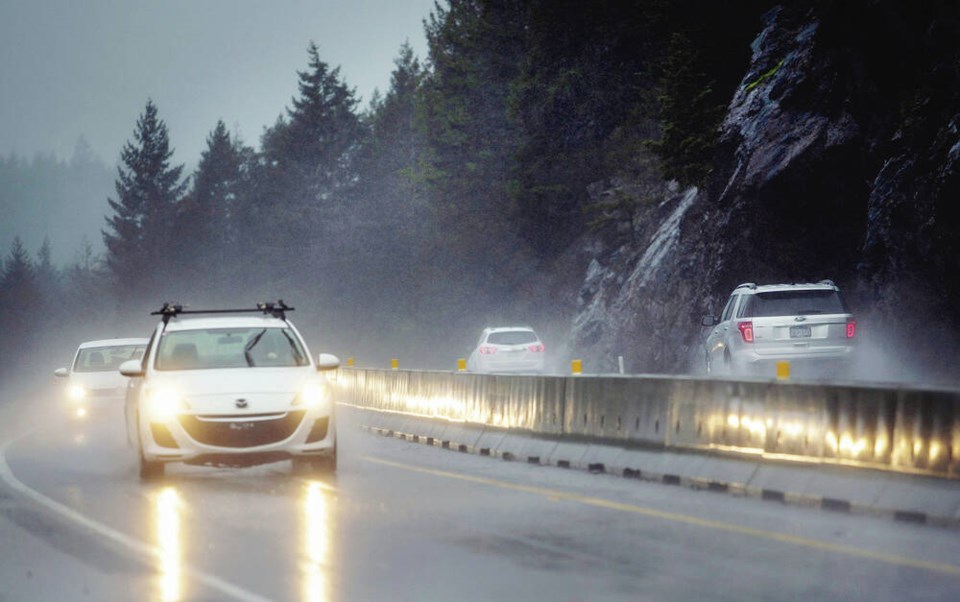We might not realize it but every day on our roads we face challenges, oftentimes some pretty big ones.
So what are some of those challenges that drivers face out there and what can we do better?
Sudden weather changes. We live in Canada, so except for peak seasons — like high summer — the environment is constantly changing north of the 49th parallel. It’s amazing how many people seem to forget this.
Dense heavy rain is a real challenge for us on the Island yet, at times, very few drivers seem to realize the danger. I receive numerous complaints about the invisibility of road markings during rainy periods. That, coupled with several millimetres of water on the road and greatly reduced front windshield visibility, makes slowing down a necessity.
The posted limit is a maximum for ideal conditions. Collisions peak at this time of year for exactly those reasons.
Not understanding the basic controls within your vehicle. A prime sin is daytime headlights at night. It’s a reasonable question about why headlights in most car models simply don’t come on fully all the time. Most cars require night time headlights to be turned on manually or set to “auto”. Hardly a night goes by where you won’t spot a vehicle with daytime headlights on only — with the extra consequence that the tail lights are also not on — at the time you need them the most.
Everyone needs time to adapt to a new vehicle, so mistakes happen. But understanding how ABS brakes work, how your fuel door opens or how to access your spare tire (if equipped) are essential items in driving knowledge. Actually reading the vehicle’s operation manual is a great start.
Failing to minimize distractions. Using a cellphone or applying makeup while driving is bad, though I suppose using a cellphone and applying makeup at the same time would be even worse. But the point here is that there are often many other types of distractions for drivers. Upset kids, road construction, cranked up music or roadside distractions come at us thick and fast every day.
Your mindset, however, should be total focus on the road. Nobody can do that 100% of the time, but your goal should be to keep your eyes on the road and then proactively take reasonable steps to minimize the distractors. Sometimes that might even include having someone else drive, especially if you are upset or have trouble concentrating on a given day. To me distractions, are a highly under-recorded reason for collisions.
Physical limitations. This is a whole topic itself. But many drivers have reached a stage where, if they’re honest with themselves, can no longer perform the physical requirements of driving a vehicle.
Are you able to turn your head around, both ways, in order to shoulder check? Has your posture deteriorated to the point where you can’t make out the edges of your vehicle? Can you reverse safely? Can you actually get in and out of your vehicle without a visit to a chiropractor? Are you in pain while driving?
These problems aren’t the sole domain of the elderly by any means. Any of these problems could cause a serious driving incident. Be honest about your physical ability to operate a 2- or 3-tonne piece of equipment.
Between 2012 and 2021, we averaged 286,500 crashes each year in B.C., according to ICBC. There’s no doubt that a lack of preparation to acknowledge the challenges our roads present every day was a big part of that.
Glove Box: We don’t often face the issue on the southern island but, for the rest of the world, drivers must share winter roads with snow plows.
On Dec. 18, near West Kelowna, a man was killed while trying to pass a plow during severe winter road conditions according to the RCMP. On Dec. 7, an 8-year-old boy was killed in a snow plow collision near Castlegar.
Basic snow plow rules for drivers include, giving them space — a lot of space — like 10 car lengths if you’re following one. Plows throw up huge chunks of debris impairing vision. Plow gear also sticks way out from the sides of the trucks. You may think you have clearance but often you don’t. One plow may just be the last truck in a plow convoy. So passing even if you think you have room is highly dangerous. Stay well to the right for oncoming plows so as to avoid spray and debris. Keep it slow. Most plow crashes occur when drivers rear-end these behemoths.
This is not about blame as both incidents are still under investigation. But a reality of winter driving is sharing the road with plows — clearly a deadly serious business for all drivers.




